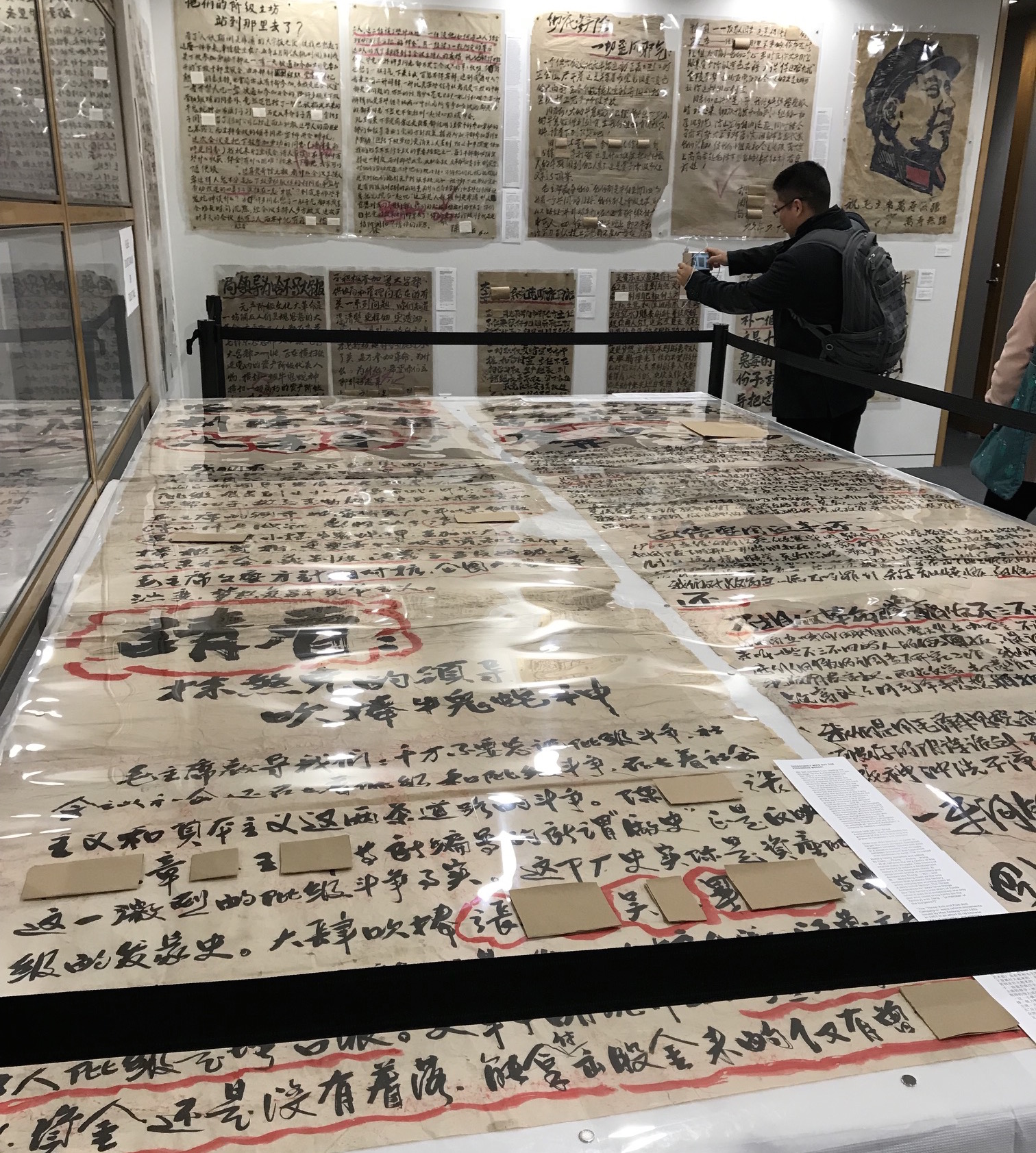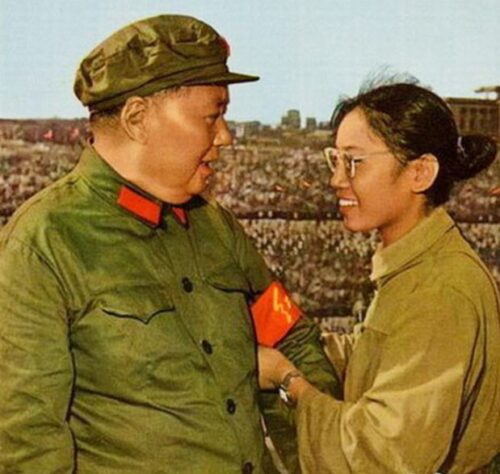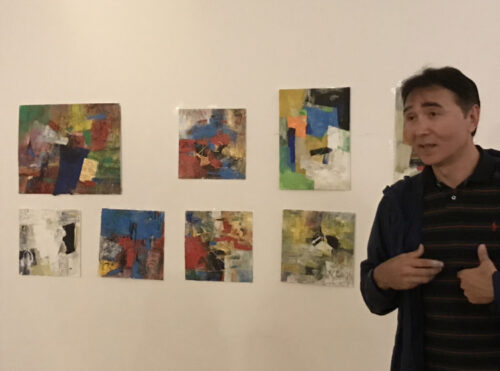When words kill: ‘Big-character posters’ are testament to tenacity and suffering in one of China’s darkest periods
In a new exhibition at Harvard’s Fairbank Center for Chinese Studies, curators have brought together a collection of dazibao and a small number of political woodcuts — which were intended to be seen and discarded — that organizers say is the first formal exhibition of these ephemeral works outside of China.

In China in Ten Words, translated into English by Allan H. Barr, author Yu Hua gives a trenchant description of big-character posters (大字报 dàzìbào) as he experienced them as a child:
At the outset of the Cultural Revolution “big-character posters” started to appear. Political screeds rendered in clumsily handwritten characters — and now and again some elegantly written ones, too — these were the first acts of the disenfranchised masses in challenging the power of officialdom. Written on broadsheets are big as decent-sized windows and posted on the walls that ran alongside city streets, shorter versions took the form of two sheets of paper mounted one on top of another, while longer ones involved five or six sheets set out in a horizontal row. In the years to follow, these big-character posters would become the largest exhibition of calligraphy China has ever seen: all across the country, in cities and towns, big streets and small, walls were decorated with them. People would gather in the streets and read the posters with undisguised relish, for although they all employed much the same revolutionary rhetoric, they began to criticize officials and their high and mighty ways.
In a new exhibition at Harvard’s Fairbank Center for Chinese Studies, curators have brought together a collection of dazibao and a small number of political woodcuts — which were intended to be seen and discarded — that organizers say is the first formal exhibition of these ephemeral works outside of China. Curated by James Evans and Susan Israel, Red and Black Revolution: Dazibao and Woodcuts From 1960s China is well worth seeing, not only as a fascinating historical and artistic display, but also as a reminder of the frightful power of political fervor and the lengths to which the human psyche can be pushed.
Yale historian Denise Ho, who participated in a lively panel to kick off the exhibition opening last Thursday, said these particular dazibao likely survived because they had been kept at a ceramics factory in Jingdezhen, Jiangxi Province, to be used as wrapping materials for products. This unlikely, homely method of transmission befits the dazibao genre. Never intended as art per se, they are a potent expression of a fraught and violent moment in the history of modern China. That tension is palpable in the format itself: rough wide brushstrokes on coarse paper, a mix of black and red ink, the layering of text upon text. It is also apparent in the messages themselves, ranging from hortatory political slogans to personal attacks against purported “class enemies” or “monsters and demons” (牛鬼蛇神 niúguǐshéshén).
These were words that, upon their appearance in the public space, held fearsome political implications. Li Jie, a film and literary scholar at Harvard, showed a documentary clip about Teacher Bian, whose house was plastered, inside and out, with dazibao denouncing her as counterrevolutionary. These words were not mere propaganda: They led directly to her death at the hands of her own elementary school pupils.

There is something instructive in the terrifying prospect of small children beating their teacher to death. The Cultural Revolution is a period that saw denunciations of son against father, father against son, wife against husband, friend against friend. There was a systematic and deliberate unraveling of the social fabric and the very basic bonds of human relationships, which was enabled and reinforced by the public act of writing a dazibao or responding to a dazibao accusation by writing over the top of it. The slogans themselves profess a sacrifice of the self to the greater whole, expressions of loyalty to “the masses” or to Chairman Mao, rather than to the family unit or any interpersonal (or intrapersonal) commitment.
The photos that Harvard professor Tian Xiaofei showed as part of her presentation demonstrated the scale of these dazibao as they were originally displayed. Some constituted enormous banners several stories high, with writing so dense that the messages couldn’t be read: The scale was the message. Other smaller dazibao named names, sometimes to deadly effect. In the Q&A after the panel, the discussion turned to the current sociopolitical environment in the U.S., which bombards us with slogans, cues, false explanations, advertisements, cajolements, and threats across social media. There is danger in simple messages, repeated loudly.
Yet the dazibao, for all its magnitude, also presented an opportunity for subtle, silent subversion. Professor Li quoted from a different chapter of Yu Hua’s Ten Words, in which the author encounters a dazibao exposing the adultery of two locals:
Sexual innuendos were beginning to show up in the poster exposés, for improper sexual relations were popular material when people indulged in character assassination and abuse. Thus I developed a taste for reading the posters…
It is that last cheeky comment, so characteristic of Yu Hua, that captures the flavor of a certain kind of dissent at the time — unspoken, internal, psychological, but dissent nevertheless. It is reminiscent of another writer of the Cultural Revolution, Wang Xiaobo, who wrote a novella about a couple who use forced self-criticisms as a chance to compose letters to each other and conjure up pornographic depictions of acts they had not actually committed. In times of political oppression, resistance is always present. As Ian Johnson puts it in a recent review in the New York Review of Books, Wang presents the “Cultural Revolution merely [as] a variation of the suffering that humans have endured in societies throughout the ages.”
Roderick MacFarquhar, professor emeritus at Harvard, also spoke about a continuity in Chinese politics from the Cultural Revolution to today. The names of individuals in the dazibao on display at Harvard are covered up, demonstrating how very close this history still is. Faulkner’s line that the past is never dead — “it’s not even past” — is particularly relevant here. Whether or not there really is a new kind of Cultural Revolution happening in China, there does seem to be a parallel between the crude and ubiquitous dazibao and the crude and ubiquitous nationalistic messages posted either by ordinary citizens or the “50-cent party” hacks hired to flood websites with pro-CCP propaganda.
But encouraging ordinary people to post messages can also backfire against those in power. It leads to the delicious satire of Yu Hua and Wang Xiaobo. It leads to the short-lived “Democracy Wall” after the death of Mao, and to the “Lennon Wall” covered in pro-independence Post-its during the Umbrella Revolution in Hong Kong. And it leads to small, personal acts of daily protest. After Teacher Bian was killed by her young students, her husband kept the big-character posters on the walls and doors of his house, where they remain today in situ. Their very preservation is a testament to human courage and defiance.
Red and Black Revolution: Dazibao and Woodcuts From 1960s China is on display at Harvard’s Fairbank Center for Chinese Studies until November 30.









